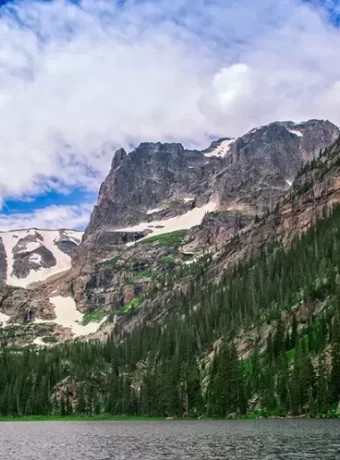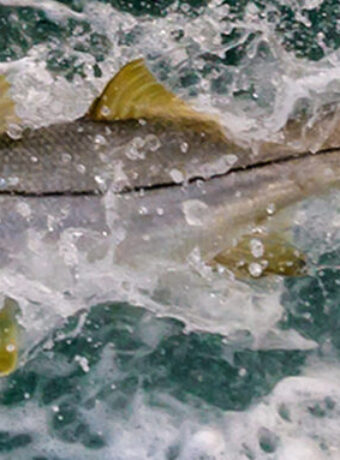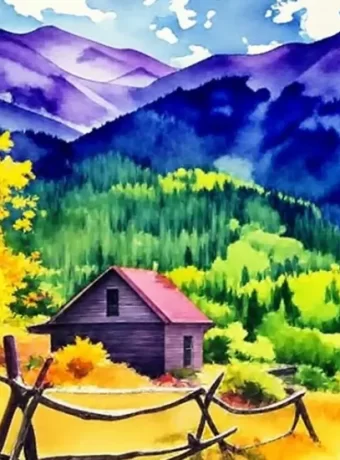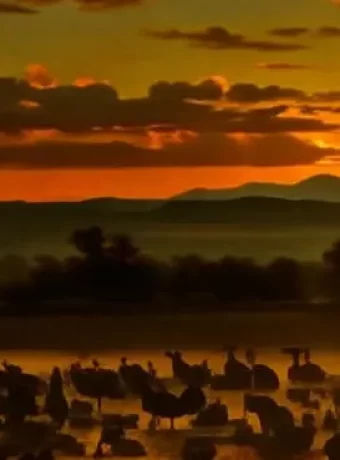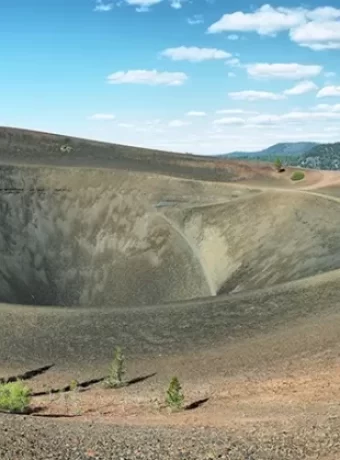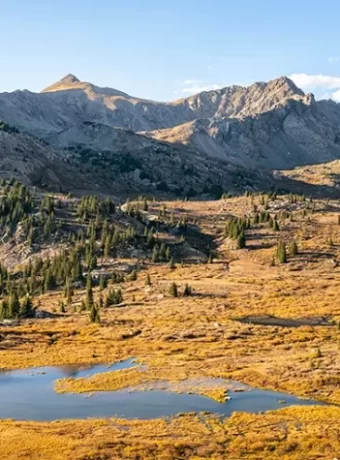Ever wondered where to find a slice of outdoor paradise? Look no further than Montana’s National Forest Campgrounds. Nestled among the towering pines and under wide-open skies, you’re about to stumble into a playground for those who crave adventure. Whether it’s your first time pitching a tent or you’re an RV enthusiast seeking new landscapes, these campgrounds offer more than just spots to stay; they promise encounters with nature that stay with you long after you’ve packed up.
Montana is vast – its forests stretch over millions of acres filled with trails, lakes, and wildlife viewing opportunities. But what makes this state truly special are its national forest campgrounds – places where anyone can immerse themselves in the great outdoors without leaving comfort too far behind.
Table of Contents
Exploring Montana’s National Forest Campgrounds
Best Camping Sites Near Bitterroot National Forest
When it comes to Lake Como in the Bitterroot National Forest, you’re in for a treat.
This campground offers a rare luxury: electric and water hookups for RVs. It’s one of three campgrounds in the Lake Como Recreation Area, but it stands out from the rest.
Upper Como and Rock Creek Horse Camp are about the same size, but Lake Como is the only one with these coveted amenities.
So if you’re looking for a comfortable camping experience in a stunning natural setting, Lake Como is the place to be.
Discover Flathead National Forest’s Hidden Gems
Ready for an adventure? Head to Spotted Bear campground in Flathead National Forest.
This remote and primitive campground is located below the southern end of the Hungry Horse Reservoir, right next to the Bob Marshall Wilderness. South Fork of the Flathead River is an excellent fly fishing experience.
It’s a true hidden gem, perfect for outdoor enthusiasts who crave a wild and secluded experience.
And if you’re into fishing, don’t miss Big Creek campground, also in Flathead National Forest. Has a great place to launch your raft, and fly fishing is great for cutthroat trout. I have floated this section to Glacier Rim and Blankenship Bridge a few hundred times.
It offers great float opportunities on the North Fork of the Flathead River and prime cutthroat trout fly fishing.
Plus, it’s conveniently located near the west entrance to Glacier National Park. Or take a drive to Pole Bridge to truly must visit bakery, and Trout Lake to the North.
Holland Lake and Swan Lake Montana National Forest Campgrounds located in the Swan Valley. I love the Swan Valley hunted here, hiked and guided fly fishing trips for almost a decade. It can take your breath away.
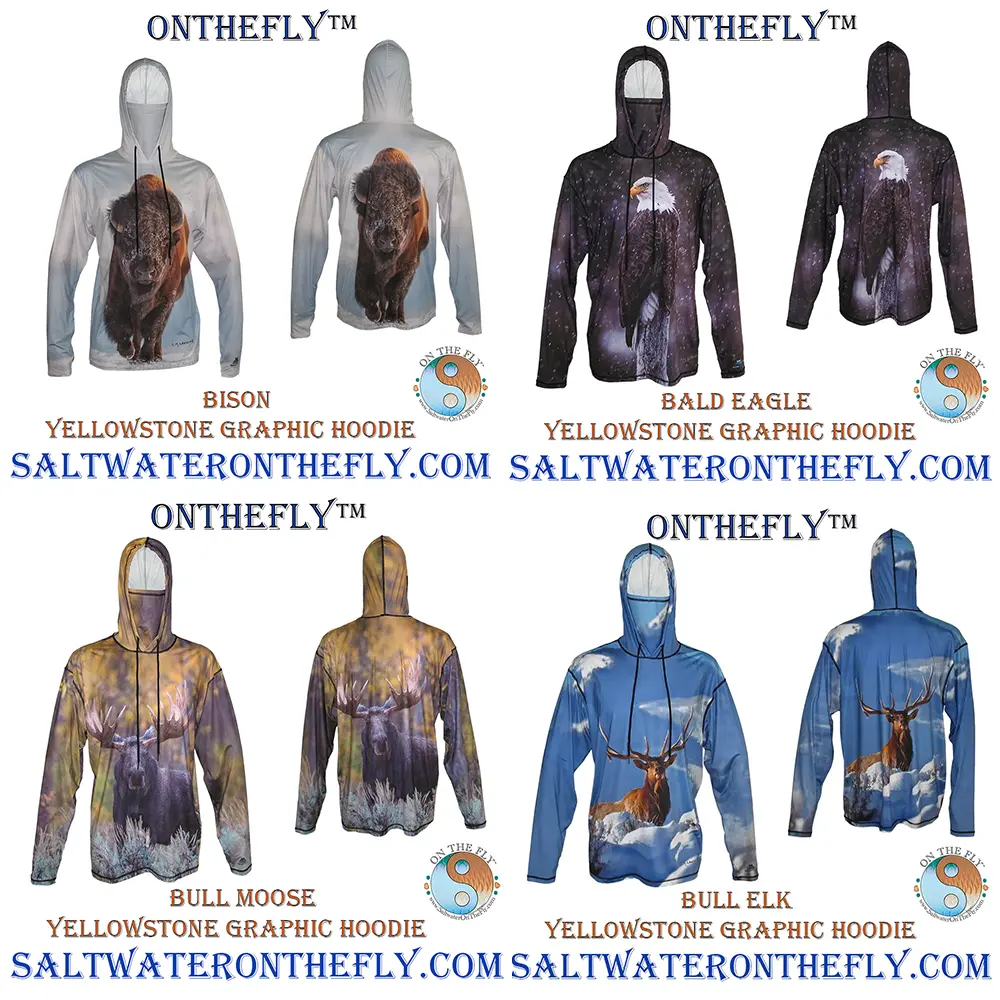
On the go in Montana’s National Forest Campgrounds is all about being prepared. Having the right base layers and outer layers for the best experience in our National Forests. Outdoor and Fly Fishing Apparel design by fly fisher’s and outdoor adventure seekers.
Swan Valley reminder: The Swan is home to a lot of wildlife. I have hiked and backpack the Mission’s to the west, and Swan Range to the east. With a couple of grizzly bear encounters that ended well for the bear and me. Be alert to the surrounds and listen.
Don’t be lost in a set of head phones. It’s Nature, listen to their music.
Wind whistling a tune thought the trees, a chipmunk quartet in tune with your step. Listen to a solo of a yellow belled marmot on the CDT or listen to the stories of the Boulders. Where they have been and where they are going.
Gallatin National Forest’s Must-Visit Campgrounds
If you’re looking for a small, uncrowded campground near Yellowstone, Soda Butte in Gallatin National Forest is a hidden treasure.
Located just 6 miles from the northeast entrance to Yellowstone and close to the scenic Beartooth Highway, this campground is rarely full.
With plenty of tall pines, open space, and wildlife, it’s a peaceful retreat that few people know about. Just keep it between us, okay?
For a top-notch basecamp near Yellowstone, check out Baker’s Hole campground, also in Gallatin National Forest.
Situated along the trout-filled Madison River and just north of West Yellowstone, it’s the perfect spot for fly fishing and exploring the park.
National Forest Campground at Cabin Creek and two mile up 287 towards Ennis, Montana turn north on Beaver Creek Road (Forest Service Rd. 985). There are several camping areas in this area. Many great trails as well. Encountered a large Black bear just before reaching Lightning Lake. Close making fly fishing on the Madison River easy to get to.
Hebgen Lake Recreation Area offers National Forest Campgrounds like Spring Creek on the South side of Hebgen Lake, BLM, and primitive National Forest Camping Areas.
And with the town of West Yellowstone nearby, you can easily take a break from cooking and enjoy a night out.
Gallatin National Forest Campgrounds Out of the way Places such as Emerald Lake Montana’s National Forest Campground is few mile to the north of West Rosebud Trail to Mystic Lake. I have spend a stormy night here before a beautiful hike the next day up to Mystic Lake for fly fishing, photography and a laugh with a friend.
In the Big Sky Area is crowded, situated just north of Yellowstone National Park. Gallatin River Valley has several of Montana’s National Forest Campgrounds. There are several hiking trails with Lava Lake, though beautiful, very well traveled. Storm Castle presents a great view of the Gallatin River Valley. With Rat Lake being a bit off the beaten path.
Lolo National Forest Bitterroot Range
Bitterroot National Forest has two great fly fishing rivers. Clark Fork River to the north and west. The Bitterroot River flowing down the up the valley.
Why Lolo and Custer Gallatin National Forests Are Camper Favorites
Seeley Lake campground in Lolo National Forest is a photographer’s dream.
Nestled among towering Western Larch trees, shrubs, and wildflowers, this campground sits right on the edge of Seeley Lake, a prime loon nesting area.
Plus, it serves as the perfect kick-off spot for wandering down the Clearwater Canoe Trail. Along the Clearwater River flows down to Salmon Lake with more lakes and dispersed camping in the National Forest.
For a unique experience, head to Sloway (aka Slowey) campground, also in Lolo National Forest.
Adjacent to I-90, it’s the only “horse motel” campground we found in the Forest Service campground inventory.
A large open area next to the campsites provides a place for horses to unload, rest, and recover from the stress of travel.
And if you’re an avid fly-angler, you won’t want to miss Bitterroot Flat campground in Lolo National Forest. Montana’s National Forest Campgrounds offer great family memories.
Stretching along the “Blue Ribbon” Rock Creek, this campground offers spacious sites, plenty of shade, and solitude – everything you need for a perfect fishing getaway.
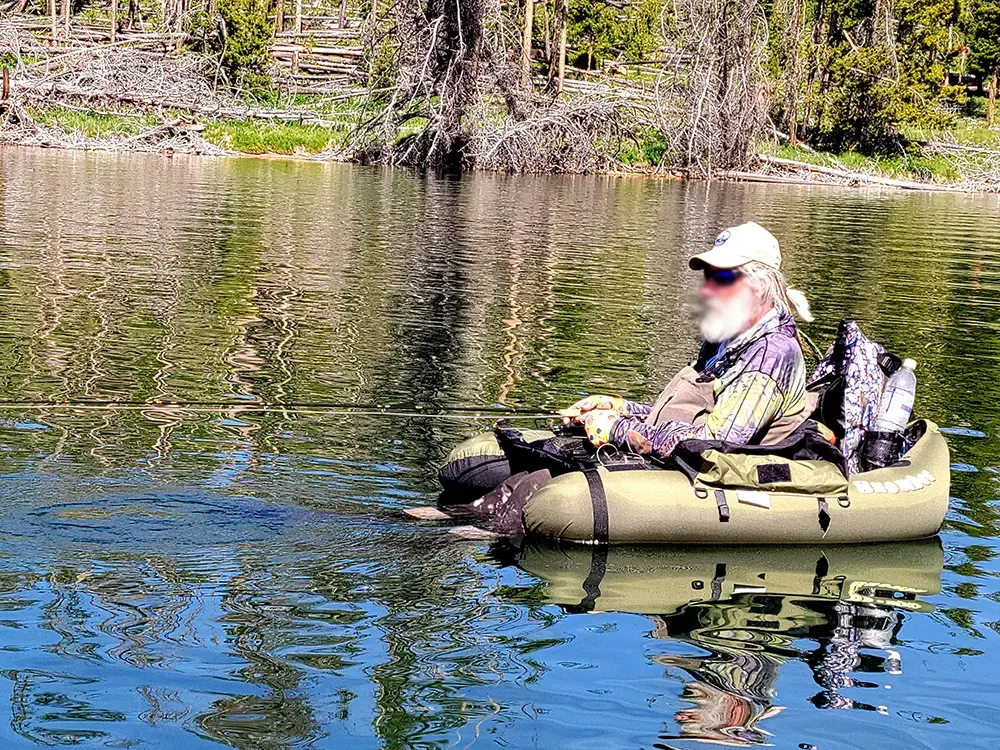
I have spent a hundred or so days on Georgetown Lake in a float tube. Some days unbelievable fly fish and others just watching moose and birds. Have float tube fly fishing Clark Canyon Reservoir only once. Caught one trout and chased by an Antelope while in my tube.
Lewis and Clark National Forest Adventure Awaits
Opportunity is just a buzz word. Fly fishing, camping, backpack, and winter camping adventures are yours.
Not a National Forest Campground, but Prewett Creek Boat Ramp and Campground is a FWP Faciality. On the Missouri River at Hardy Creek and Mountain Palace. Fly fishing the Missouri River can be an experience like no other. This area was once home. Lots to explore with Gates of Mountains Wilderness Area, which lies in the Helena National Forest.
On the upper Blackfoot, Copper Creek Campground make a great basecamp. Sweet fly fishing spot, great hiking and photography opportunities. In Blackfoot Valley, Browns Lakes was a fun place to float tube fly fish. Learn more about float tube fly fishing click here.
Other Lewis and Clark National Forest destinations to explore is the Native American Trail up over Lewis and Clark Pass, up Alice Creek. Cross country skiing from Stemple Pass to Lincoln or we use to, when I lived in the area..
Kootenai National Forest Cabinet Mountains Wilderness is Remote Montana
Home to the Kootenai River an expanse of National Forest and Wilderness to the Canadian Border on the north, with Idaho to the west.
Kootenai National Forest Campgrounds
Here is a list of campgrounds in the Kootenai National Forest:
1. Boulder Creek Campground
Elevation: 2,300 ft
- 12 campsites
- Accessible restrooms and potable water
- Fishing and hiking nearby
2. Cabinet Gorge Campground
Elevation: 2,100 ft
- 17 campsites
- Accessible restrooms and potable water
- Fishing and hiking nearby
3. ** Copper Creek Campground**
Elevation: 3,200 ft
- 10 campsites
- Vault toilets and no potable water
- Fishing and hiking nearby
4. FDR Campground
Elevation: 2,500 ft
- 15 campsites
- Accessible restrooms and potable water
- Fishing and hiking nearby
5. Grand Lake Campground
Elevation: 2,500 ft
- 15 campsites
- Accessible restrooms and potable water
- Fishing and boating nearby
6. Kootenai River Campground
Elevation: 2,100 ft
- 20 campsites
- Accessible restrooms and potable water
- Fishing and rafting nearby
7. Laurentide Campground
Elevation: 3,500 ft
- 10 campsites
- Vault toilets and no potable water
- Hiking and fishing nearby
8. Luby Bay Campground
Elevation: 2,100 ft
- 15 campsites
- Accessible restrooms and potable water
- Fishing and boating nearby
9. Mineral Point Campground
Elevation: 3,200 ft
- 10 campsites
- Vault toilets and no potable water
- Hiking and fishing nearby
10. Pend Oreille Divide Campground
Elevation: 3,500 ft
- 10 campsites
- Vault toilets and no potable water
- Hiking and fishing nearby
11. Pend Oreille Lake Campground
Elevation: 2,100 ft
- 20 campsites
- Accessible restrooms and potable water
- Fishing and boating nearby
12. Schuller Campground
Elevation: 2,500 ft
- 10 campsites
- Vault toilets and no potable water
- Hiking and fishing nearby
Beaverhead-Deerlodge National Forest
Pintlar Wilderness area, Georgetown Lake, and Clark Canyon Reservoir which is managed by BLM. Know as camp Fortunate by Lewis and Clark.
Traveling from Georgetown Lake half to Phillipsburg hang a left over Skalkaho Pass into the Bitterroot National Forest. There use to be sapphire mines on the pass. It’s been a while since I have travel through there.
Custer Gallatin National Forest District
Another amazing area with the Akasaka Beartooth Wilderness Area, Stillwater River, and Beartooth Pass, just to begin with.
Activities and Experiences in Montana’s National Forests
Wildlife Viewing Opportunities Across Montana’s Forests
If you’re a fan of wildlife, Montana’s national forests are pretty much your dream come true.
From the remote and primitive Beaver Creek Campground in eastern Montana to the popular Seeley Lake Campground in the Lolo National Forest, opportunities for wildlife viewing abound.
So, don’t forget to grab your camera and binoculars because you’re about to encounter everything from the majestic bald eagles soaring above to the playful river otters frolicking below.
The Spotted Bear Campground in the Flathead National Forest is a particularly great spot for wildlife watching.
Located in a remote area next to the Bob Marshall Wilderness, this primitive campground attracts all sorts of critters.
Keep an eye out for deer, elk, moose, and even the occasional grizzly bear (from a safe distance, of course with a long lens).
Winter Sports and Activities in the Great Outdoors
Just because it’s cold outside doesn’t mean the fun has to stop in Montana’s national forests.
In fact, winter is one of the best times to explore these stunning landscapes.
Many campgrounds, like Soda Butte Campground in the Gallatin National Forest, are located near prime spots for winter sports and activities.
Strap on some snowshoes or cross-country skis and traverse the snowy trails, or rev up your snowmobile for an adrenaline-pumping ride through the backcountry.
Ice fishing is another popular winter pastime in Montana’s national forests.
Drill a hole in the thick ice of a frozen lake, drop in your line, and wait for the fish to bite.
Every angler needs to give this a shot at least once; it’s an experience that packs its own kind of thrill and satisfaction.
Horseback Riding Trails for Every Level of Experience
Explore Montana’s national forests the old-fashioned way: on horseback.
Many campgrounds, such as Sloway Campground in the Lolo National Forest, cater specifically to equestrians.
This “horse motel” campground features a large open area where horses can rest and recover after a long day on the trails.
Whether you’re a seasoned rider or a first-timer, Montana’s national forests offer horseback riding trails for every level of experience.
Trot through wildflower-filled meadows, gallop along babbling brooks, and take in the breathtaking views from atop a mountain ridge.
It’s an unforgettable way to immerse yourself in the natural beauty of Montana’s wilderness.
Essential Trip Planning for Montana’s National Forest Campgrounds
RV Camping Made Easy in Montana’s Natural Beauty
Picture this: waking up in your cozy RV, stepping outside, and being greeted by the stunning natural beauty of Montana’s national forests.
With nine national forests to choose from, RV camping in Montana is an experience like no other.
The US Forest Service manages these forests, and unless otherwise prohibited, you can camp in your RV on any Forest Service land.
This is known as dispersed camping – camping outside of a designated campground.
While dispersed camping offers more freedom and solitude, it also means you won’t have access to amenities like restrooms or running water.
For a more developed RV camping experience, check out campgrounds like Lake Como in the Bitterroot National Forest.
This campground offers electric and water hookups, making your RV camping trip a breeze.
Utilizing Visitor Centers for a Smooth Camping Experience in Montana’s National Forest Campgrounds
Before setting out on your Montana national forest camping adventure, be sure to stop by a visitor center.
These helpful resources are staffed by knowledgeable rangers who can provide you with maps, trail information, and insider tips on the best camping spots.
Visitor centers are also a great place to learn about any current restrictions or closures that may affect your trip.
For example, some campgrounds may be closed due to weather conditions or maintenance work.
By stopping at a visitor center, you can ensure that your camping experience goes as smoothly as possible.
Plus, many visitor centers offer educational exhibits and programs that provide fascinating insights into the natural and cultural history of the area.
It’s a great way to deepen your appreciation for the stunning landscapes you’ll be exploring during your camping trip.
Unique Accommodations Within Montana’s National Forests
Lakeside Camping at Its Finest in Montana’s Forests
Fall asleep to the gentle lapping of waves and wake up to a stunning view of a glassy lake surrounded by towering pines.
Camping by a lake in one of Montana’s national forests is something you won’t forget, even long after your tent is tucked away.
One of the best spots for lakeside camping is Seeley Lake Campground in the Lolo National Forest.
This picturesque campground sits right on the edge of Seeley Lake, a prime nesting area for loons.
Fall asleep to their haunting calls and wake up to a misty sunrise over the water.
Another great option for lakeside camping is Lake Como Campground in the Bitterroot National Forest.
With electric and water hookups available, this campground is perfect for RV campers who want to enjoy the beauty of lakeside living with all the comforts of home.
Cozy Creek Cabins for a Rustic Retreat
For a truly unique camping experience, skip the tent and stay in a cozy creek cabin.
These rustic retreats are scattered throughout Montana’s national forests, often in remote and scenic locations.
One of the best places to find creek cabins is in the Gallatin National Forest.
The Soda Butte Creek Cabin, for example, sits just steps away from a bubbling creek and offers stunning views of the surrounding mountains.
Step inside, and you’ll be greeted with cozy essentials like bunk beds for a good night’s sleep and a wood stove that promises to keep the chill at bay during those colder evenings.
Another great option for creek cabins is the Beaver Creek Cabin in the Lolo National Forest.
This historic cabin was built in the 1920s and has been lovingly restored to its original condition.
It sits in a secluded spot along Beaver Creek, offering plenty of opportunities for fishing, hiking, and wildlife watching.
Tips & Tricks for a Memorable Montana Camping Experience
Navigating Reservations for Peak Season Camping
Summer is prime time for camping in Montana’s national forests, and popular campgrounds can fill up fast.
To ensure you snag a spot at your favorite campground, it’s important to plan ahead and make reservations early.
Most campgrounds in Montana’s national forests can be reserved through Recreation.gov.
This user-friendly website allows you to search for campgrounds by location, date, and amenities.
Once you find a campground that fits your needs, you can easily reserve a site online.
Keep in mind that some campgrounds may have a portion of their sites set aside for first-come, first-served camping.
If you’re unable to secure a reservation, it’s worth checking for these walk-up sites when you arrive at the campground.
Just be sure to have a backup plan in case the campground is full.
Finding the Best Free and Public RV Camping Spots
If you’re looking to save some money on your Montana camping trip, consider skipping the developed campgrounds and opting for free, public RV camping instead.
Also known as dispersed camping, this type of camping involves setting up your RV on Forest Service land outside of designated campgrounds.
While dispersed camping is allowed in most areas of Montana’s national forests, there are a few rules and guidelines to keep in mind.
First, always practice Leave No Trace principles and pack out all of your trash and waste.
Second, be sure to camp at least 100 feet away from any water sources to avoid contaminating them.
Finally, check with the local ranger station for any specific regulations or closures in the area where you plan to camp.
Some of the best spots for free, public RV camping in Montana’s national forests include the Beaver Creek area in the Beaverhead-Deerlodge National Forest and the Rock Creek area in the Lolo National Forest.
In both spots, you’re spoiled for choice with hidden gems perfect for camping and soaking in Montana’s natural beauty.
Protecting Montana’s Natural Resources While Camping
Practicing Leave No Trace Principles in the Wild
Camping in Montana’s national forests is a privilege, and it’s up to all of us to ensure that these stunning landscapes remain pristine
Montana National Forest Camping Tip:
Get ready to dive into Montana’s national forest campgrounds, where adventure and natural beauty await. From RV hookups at Lake Como to secluded spots in Flathead National Forest, there’s something for everyone. Don’t miss out on wildlife watching or winter sports. Plan ahead for peak season, and always respect the wilderness.
FAQs in Relation to Montana’s National Forest Campgrounds
Is Boondocking allowed in Montana?
Yes, boondocking is permitted in many parts of Montana. Just ensure that you’re on public land and adhere to local rules.
Can you camp for free in Flathead National Forest?
Absolutely. There are locations where camping won’t cost you anything, but they might lack amenities. It’s advisable to do your research first.
Can you wild camp in Montana?
Yes, you can, especially on Bureau of Land Management or national forest lands. However, always check the specific area’s regulations.
Can I camp in Gallatin National Forest?
Definitely. Gallatin National Forest welcomes campers with both designated sites and dispersed options. Grab a map and start exploring.
Conclusion of Montana’s National Forest Campgrounds
In essence, exploring Montana’s National Forest Campgrounds isn’t just about getting away from it all. It’s about finding something greater – a connection to nature, moments of tranquility beside crackling fires under starlit skies, and adventures across diverse terrains that remind us why we love the outdoors so much.
This journey through Montana’s wilderness offers more than scenic views; it brings lessons in resilience from observing untouched ecosystems thriving around us. With each campground visit comes stories worth sharing – tales woven into our lives’ fabric as vibrant threads connecting us back to Earth’s natural rhythms.
We’ve ventured together through these lands rich in beauty and steeped in history—now take those memories formed between trees whispering ancient secrets against windswept peaks home until next time when wanderlust calls again invitingly towards Big Sky Country’s embrace.
Looking for Something More Remote, Canada or Say Alaska
Get Lost in America has such destinations for you to explore. Explore some of the best brook trout fly fishing on the planet at Fortress Lake. How about a fly in to a remote Alaskan Adventure.

